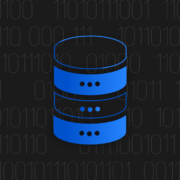
Continuous Integration and Continuous Delivery with Jira Done Right (Advanced)
Jira is software that was created to help teams work together and deliver the best solutions efficiently and agilely. However, to achieve this successfully, it is important to set up processes in the right way. Continuous integration and continuous delivery are the key elements of DevOps for all companies working in this methodology. Only properly managed and developed CI/CD in Jira will bring the desired results.
In the following tutorial, you will learn which tools and elements of continuous integration and continuous delivery are crucial for your team.
Automation – Jira CI/CD pipeline
CI/CD pipeline is a workflow in DevOps that focuses on a frequent and reliable software delivery process. It allows DevOps teams to create code, integrate it, run tests, deliver releases and make software changes collaboratively and in real-time.
A key feature of Jira CI/CD is the use of automation to ensure code quality. As software changes move through the process, test automation is used to identify issues earlier, send code changes to different environments and deliver applications to production environments. At this stage, the highest possible quality of changes made to the code is ensured. This ensures that changes made by all team members are integrated comprehensively and work as intended.
CI/CD tools help combine different systems’ functionalities into one. Thus, all key tasks in software delivery are fulfilled in an easy way. CI/CD automation takes all the necessary steps, which otherwise would be time-consuming and inefficient.
Jira down? Get your team back to tasks within minutes with the first professional backup for Jira Cloud, Jira Service Management, and Jira Work Management.
What is Open DevOps – Atlassian CI/CD solution
Atlassian Open DevOps is a platform that integrates Atlassian and partner tools. Open DevOps brings them together in a single Jira Software project. It also enables connection to key tools such as GitHub.
The Jira automation also works with Open DevOps. You can easily create automation rules at any stage of the code change deployment process. Because Open DevOps integrates all relevant work updates with Jira, it can provide insight into the health of the team through metrics. This includes metrics such as deployment frequency and cycle time.
Jira CI/CD tools and plugins
Most modern applications require code to be developed using a variety of solutions and tools so that teams can deliver a high-quality product. Therefore, the process requires a consistent mechanism for integrating and validating code changes. CI/CD tools help store project-specific parameters that must always be considered for new changes. Automating CI/CD with Jira plugins helps maintain best practices and makes tedious tasks easier.
Test automation with Katalon
Katalon Studio and TestOps integration – this plugin provides comprehensive integration with Katalon TestOps and Katalon Studio. It is useful for functional test automation and test management.
Catalon is primarily designed for creating and reusing automated UI test scripts. It supports automated testing of UI components such as iFrames, pop-ups, and wait times. The application is available for Microsoft Windows, macOS, and Linux.
CircleCI for Jira
CircleCI Jira enables teams to operate more efficiently and effectively. Among other things, this plugin will allow you to
- track and validate deployments in real-time,
- get important information on the success of work across multiple teams,
- improve your estimates of how quickly a new feature will be implemented or identify where a team may be stuck.
Jenkins Integration for Jira
This plugin helps to connect Jenkins with Jira. Among its most important advantages are:
- Visualize Jenkins build information in Jira issues.
- Visualize Jira build data.
- Select which builds to synchronize.
GitProtect Backup for Jira and DevOps pipeline
Uninterrupted teamwork and minimization of the risk caused by non-functioning tools will help in effective software delivery. To do this, only use trustworthy and professional tools such as GitProtect.io, which provides advanced Jira backup. All you need to do is authenticate your Jira instance and connect your accounts to start automatically backing up your Jira Cloud data.
DevOps metrics – monitor your Jira CI/CD pipeline
DevOps metrics are data that clearly show the performance of the implemented DevOps methodology and help to quickly identify and fix any problems in the process. These metrics have a variety of applications for improving performance while delivering the best quality software. These metrics can be used to monitor technical aspects and collaboration between teams.
There are many different points of view on the issue of monitoring the success of DevOps and consequently CI/CD. Below are the key ones from the perspective of the success of the entire operation.
- Deployment frequency – is one of the most important elements for continuous integration and continuous delivery. Unplanned changes in frequency are a clear sign that the process needs to be evaluated.
- Average recovery time – defines how long it takes to recover from a partial service interruption or complete failure. It is a key element in risk management and compliance with Jira. It is an important metric to track regardless of whether the interruption is the result of internal company actions or a system failure. Regardless of the source of the problems, when this marker is high, you should consider changing your process. For risk management, the Jira Backup tool will be useful in helping you restore a backup of your team’s data quickly and efficiently.
- Time to change – a key aspect of continuous integration. Change lead time is when a code change is approved and when it is ready to be deployed – it has passed testing and been verified as compliant.
- Change Failure Rate – refers strictly to changes that have gone through testing and have not been caught before deployment, and cause bugs in the product. The change failure rate is the percentage of code changes that require fixes or other corrective actions after production. This demonstrates the quality of the Jira CI/CD pipeline. It needs to constantly motor as it is affected by many factors. The shift left philosophy was created to minimize this rate.







